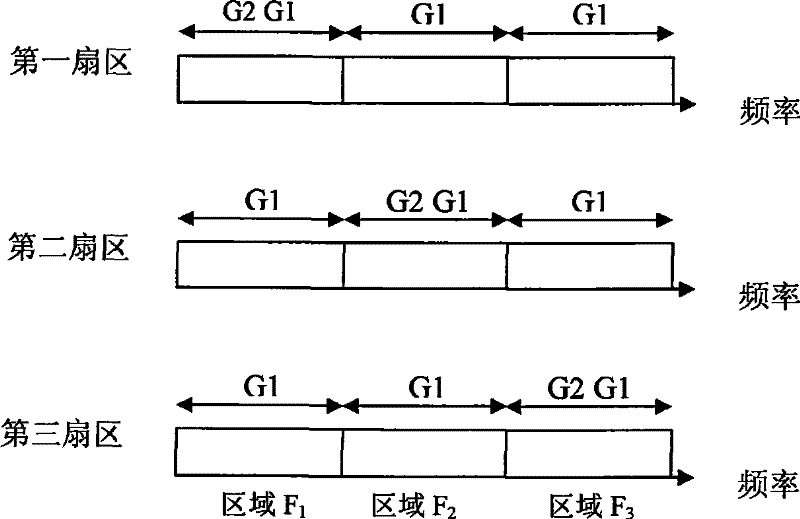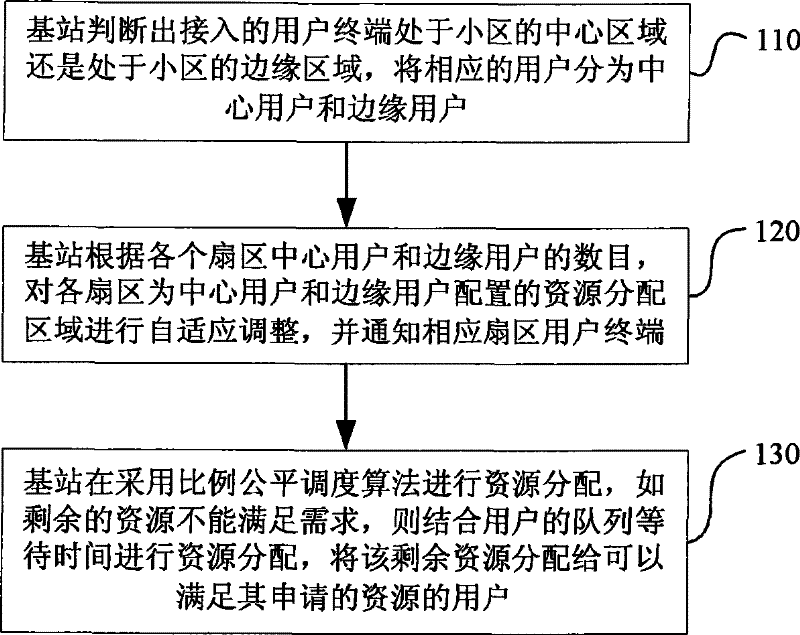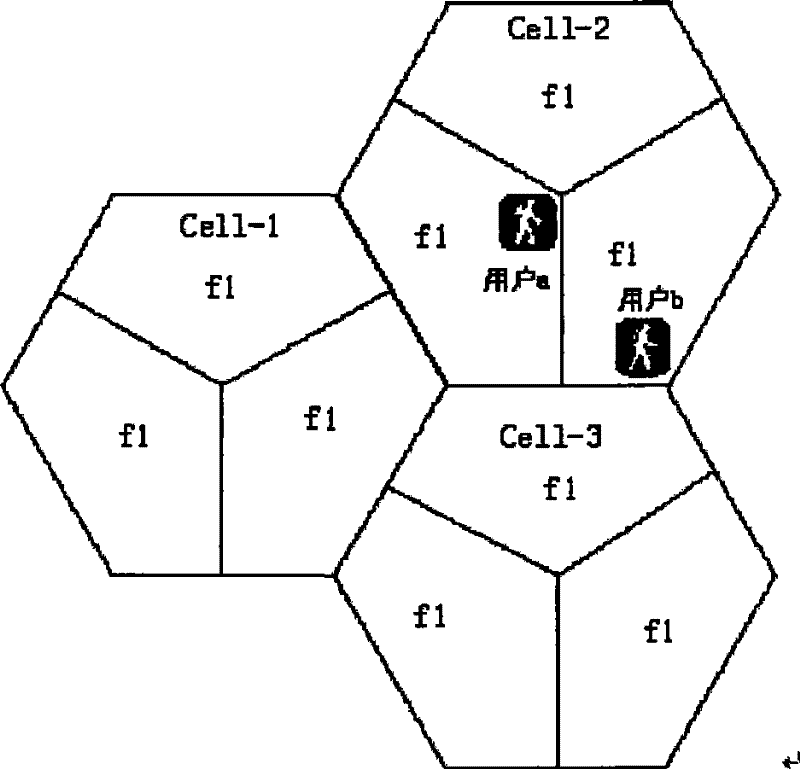Resource allocation method with partial frequency multiplexing
A technology of resource allocation and frequency multiplexing, applied in communication between multiple stations, electrical components, wireless communication, etc., can solve problems such as unreachable performance, achieve strong practicability, simple and flexible process, and improve user communication quality Effect
- Summary
- Abstract
- Description
- Claims
- Application Information
AI Technical Summary
Problems solved by technology
Method used
Image
Examples
Embodiment Construction
[0039] Taking the WiMAX system as an example, the technical solution of the present invention will be further described in detail in conjunction with the accompanying drawings. However, the present invention is not limited to the application in the WiMAX system, but can be applied to various communication systems using partial frequency reuse technology.
[0040] The initial configuration of resource allocation areas in this embodiment is to divide the entire system frequency band resources into three resource allocation areas F1, F2, and F3. The central users of the three sectors can use the resources in two of the resource allocation areas, and the edge Users can only use resources in one of the resource allocation areas, and resource allocation areas configured by different sectors for edge users do not overlap each other in frequency to avoid interference. Of course, the present invention is not limited to this initial configuration. if available figure 1 In the existing...
PUM
 Login to View More
Login to View More Abstract
Description
Claims
Application Information
 Login to View More
Login to View More - R&D
- Intellectual Property
- Life Sciences
- Materials
- Tech Scout
- Unparalleled Data Quality
- Higher Quality Content
- 60% Fewer Hallucinations
Browse by: Latest US Patents, China's latest patents, Technical Efficacy Thesaurus, Application Domain, Technology Topic, Popular Technical Reports.
© 2025 PatSnap. All rights reserved.Legal|Privacy policy|Modern Slavery Act Transparency Statement|Sitemap|About US| Contact US: help@patsnap.com



